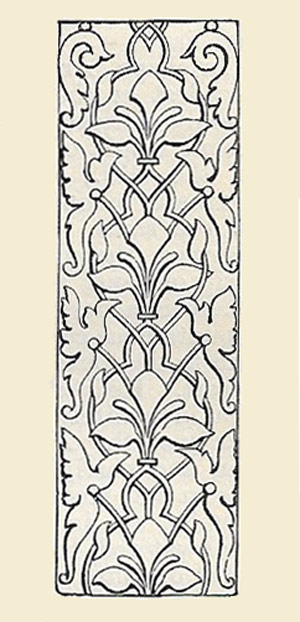arabesque

An arabesque panel
Arabesque is an ornate form of decoration, either sculptured or painted, which the Spanish Moors are supposed to have introduced into modern Europe. But the species of enrichment to which this term is now applied was extensively employed both by the Greeks and Romans, the latter in particular being masters of the style.
The Egyptians, from whom the Moors probably derived their original notions of this and other forms of art, also employed it in their monumental decorations. The arabesque of the Moors entirely excluded the figures of animals, the representation of which was forbidden by Islam, and confined itself to the foliage, etc. of plants and trees, elaborately intertwined. This limitation was again departed from when the decorations were discovered on the walls of the baths of Titus, in the time of Leo X. More recently those in the houses at Herculaneum and Pompeii came to form the models of imitation, and the modern arabesque consists usually of combinations of plants, birds, and animals of all kinds, including the human figure, and embracing not only every natural variety, but stepping beyond the bounds of nature.
The arabesques with which Raphael adorned the galleries of the Vatican are the most famous and beautiful which the modern world has produced.
